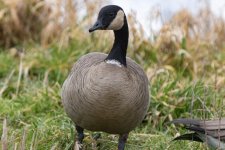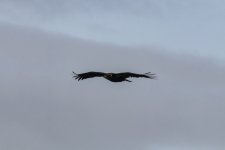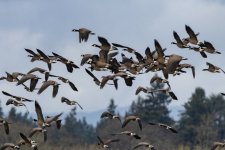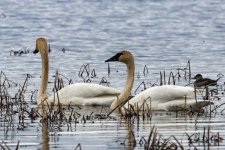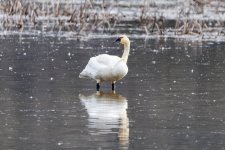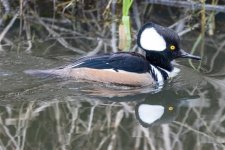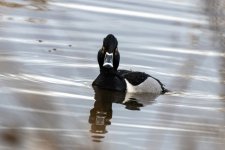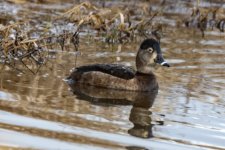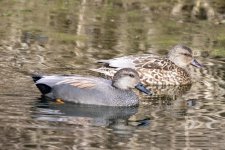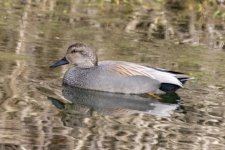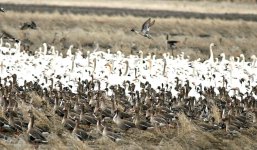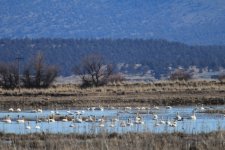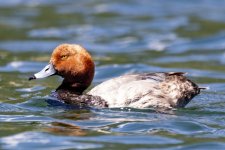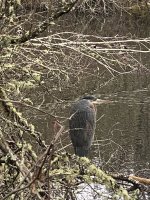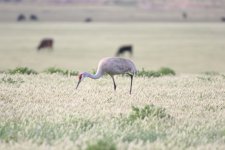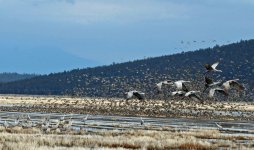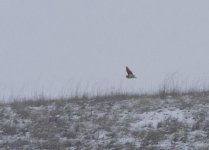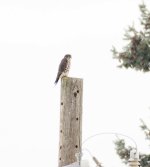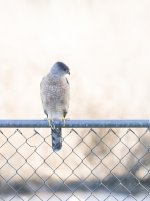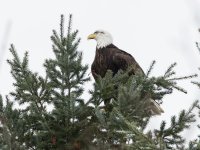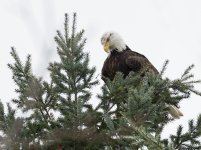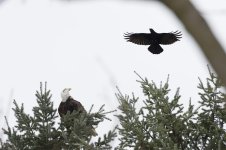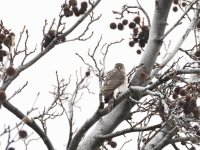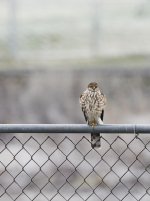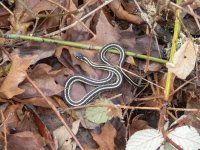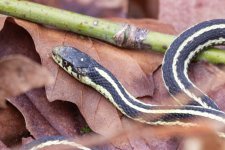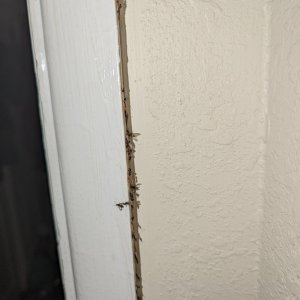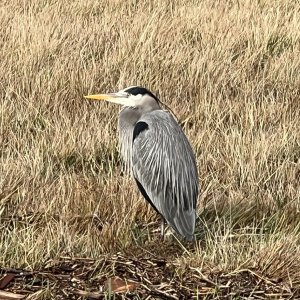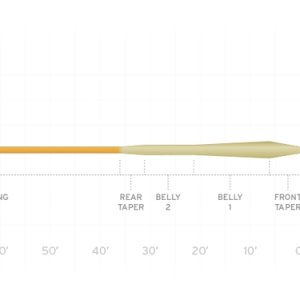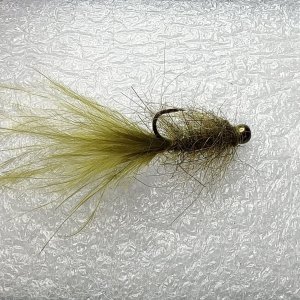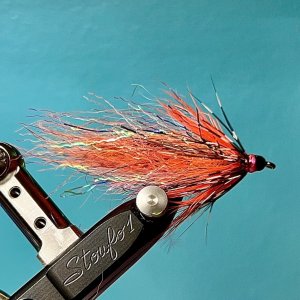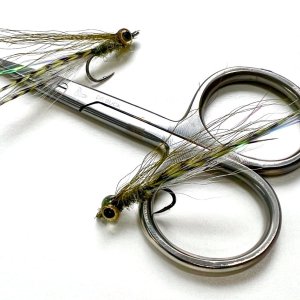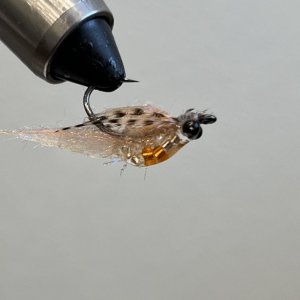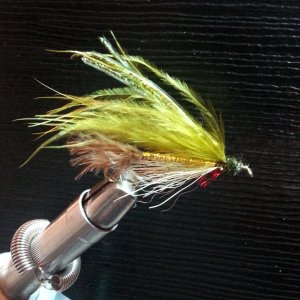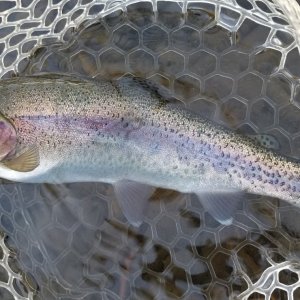Pied-billed grebes – cute, fluffy assassins. When we visit the Auto Route at Ridgefield NWR, it is quite common to see two or three pied-billed grebes hunting in the canal that parallels the two-way section of the gravel road that leads the hunting access. However, these birds can be skittish when your car approaches. They may turn away, dive, or try to swim ahead of the vehicle. On the other hand, they aren’t so upset that they will burst into flight and leave the canal; they have lunch to catch after all.
If you catch a pied-billed with its mouth full, it will ignore you to focus on more important matters – a meal. I drove up on such a bird that was engaged in a tussle with a large fish (relative to the small grebe). This bird had the black bill ring that individuals develop in the breeding season. When I first arrived, the bird had its bill across the cylindrical body of the fish
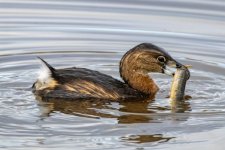
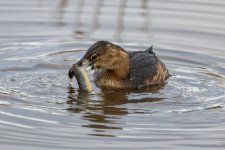
and it was thrashing it around in the water.
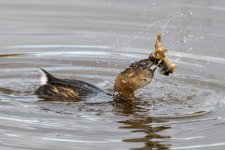
The bird repositioned its grip on the fish (which I later identified as a longnose dace) several times.
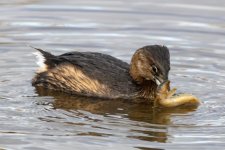
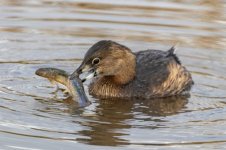
Several times, the grebe dropped the fish and then dove under the water to regrab it. I suspect that this battle had been going on for a while because the fish wasn’t resisting very much (and had several beak marks along its body), but the fish would bend its body from time to time. I was expecting the grebe to reposition the fish to a head-first orientation in order to swallow it.
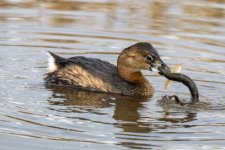
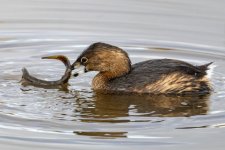
Ultimately, I got bored waiting for the grebe to be confident that it had subdued the dace. It appeared to be playing with its food. I assume that the grebe eventually swallowed its lunch.
Steve
If you catch a pied-billed with its mouth full, it will ignore you to focus on more important matters – a meal. I drove up on such a bird that was engaged in a tussle with a large fish (relative to the small grebe). This bird had the black bill ring that individuals develop in the breeding season. When I first arrived, the bird had its bill across the cylindrical body of the fish


and it was thrashing it around in the water.

The bird repositioned its grip on the fish (which I later identified as a longnose dace) several times.


Several times, the grebe dropped the fish and then dove under the water to regrab it. I suspect that this battle had been going on for a while because the fish wasn’t resisting very much (and had several beak marks along its body), but the fish would bend its body from time to time. I was expecting the grebe to reposition the fish to a head-first orientation in order to swallow it.


Ultimately, I got bored waiting for the grebe to be confident that it had subdued the dace. It appeared to be playing with its food. I assume that the grebe eventually swallowed its lunch.
Steve

